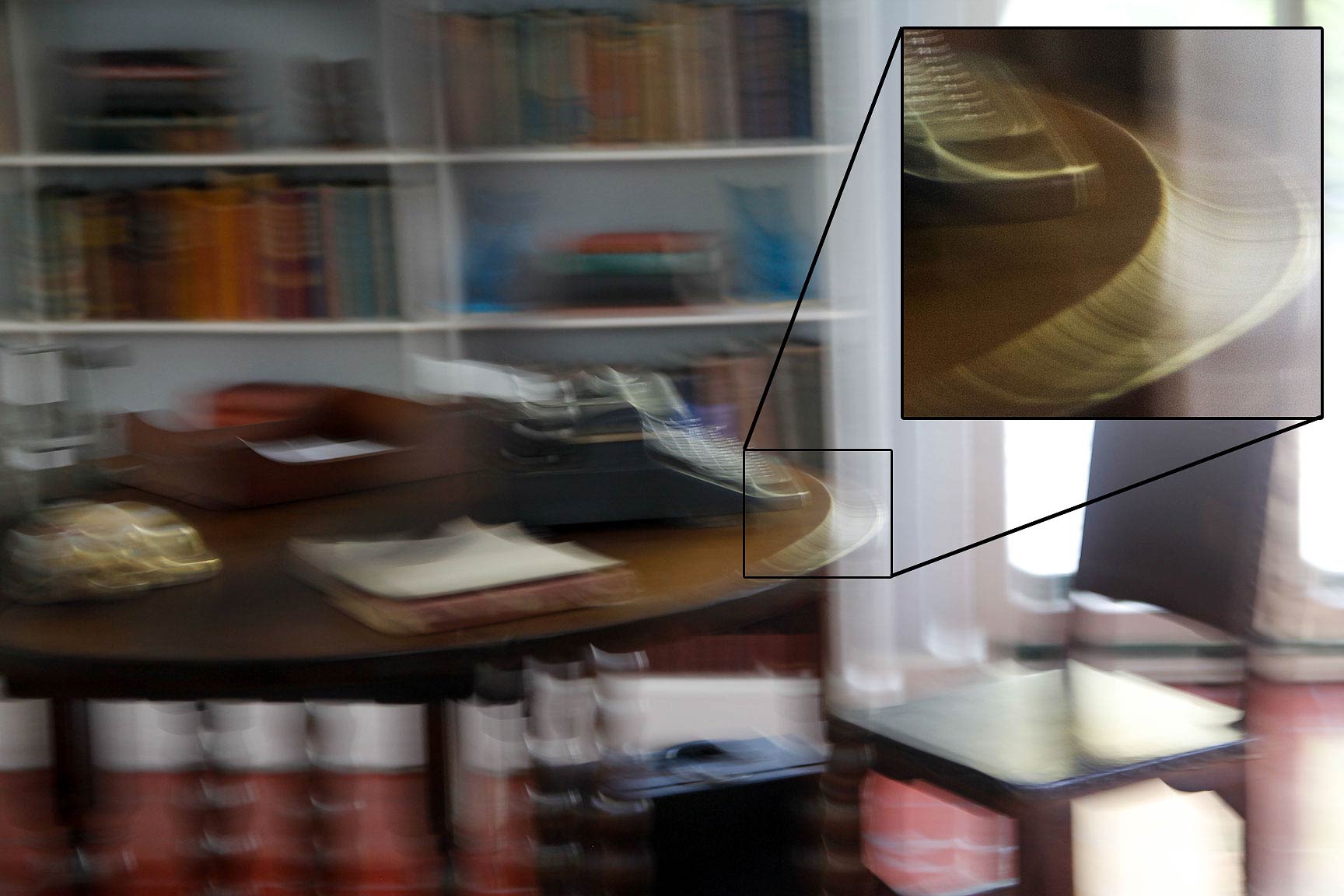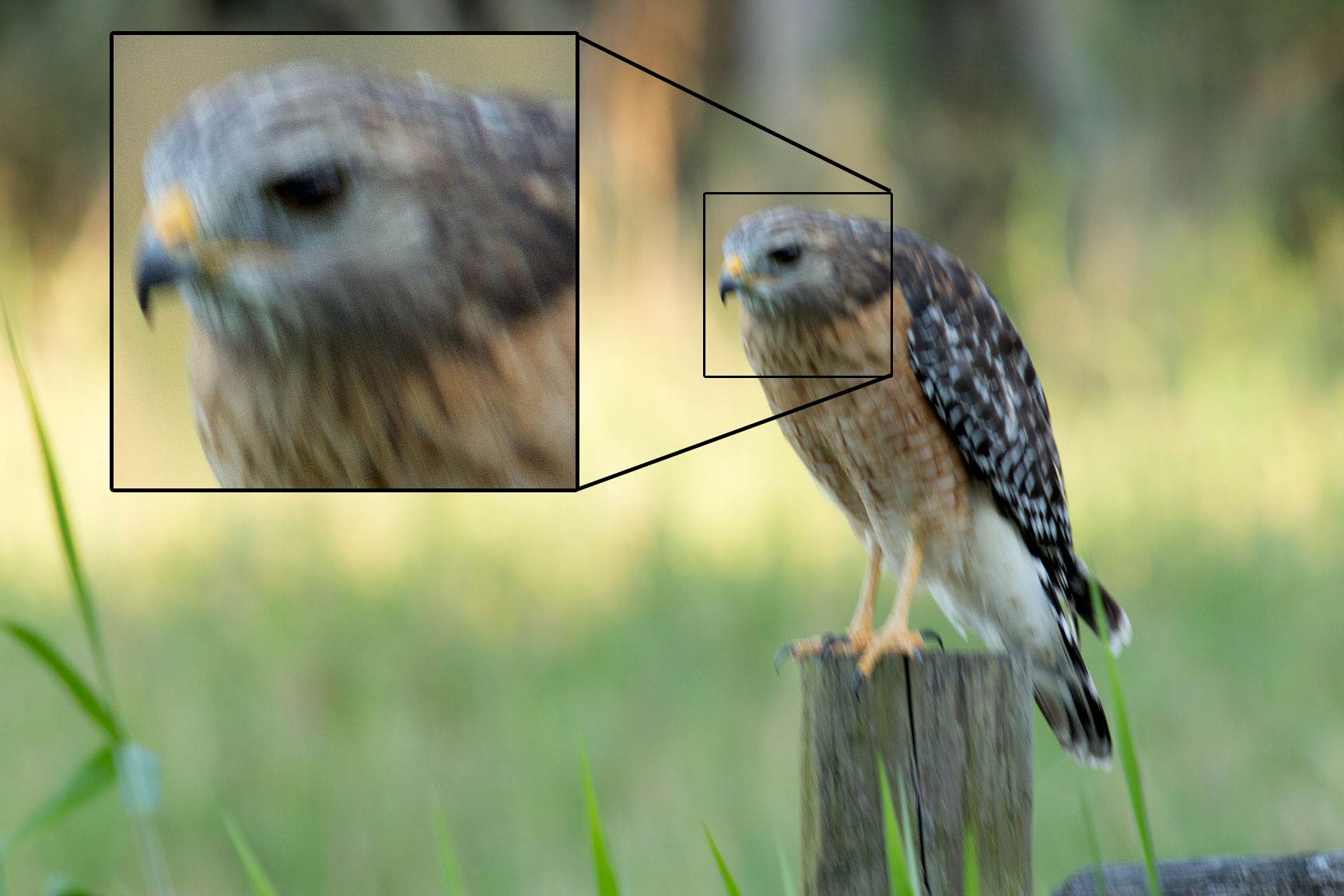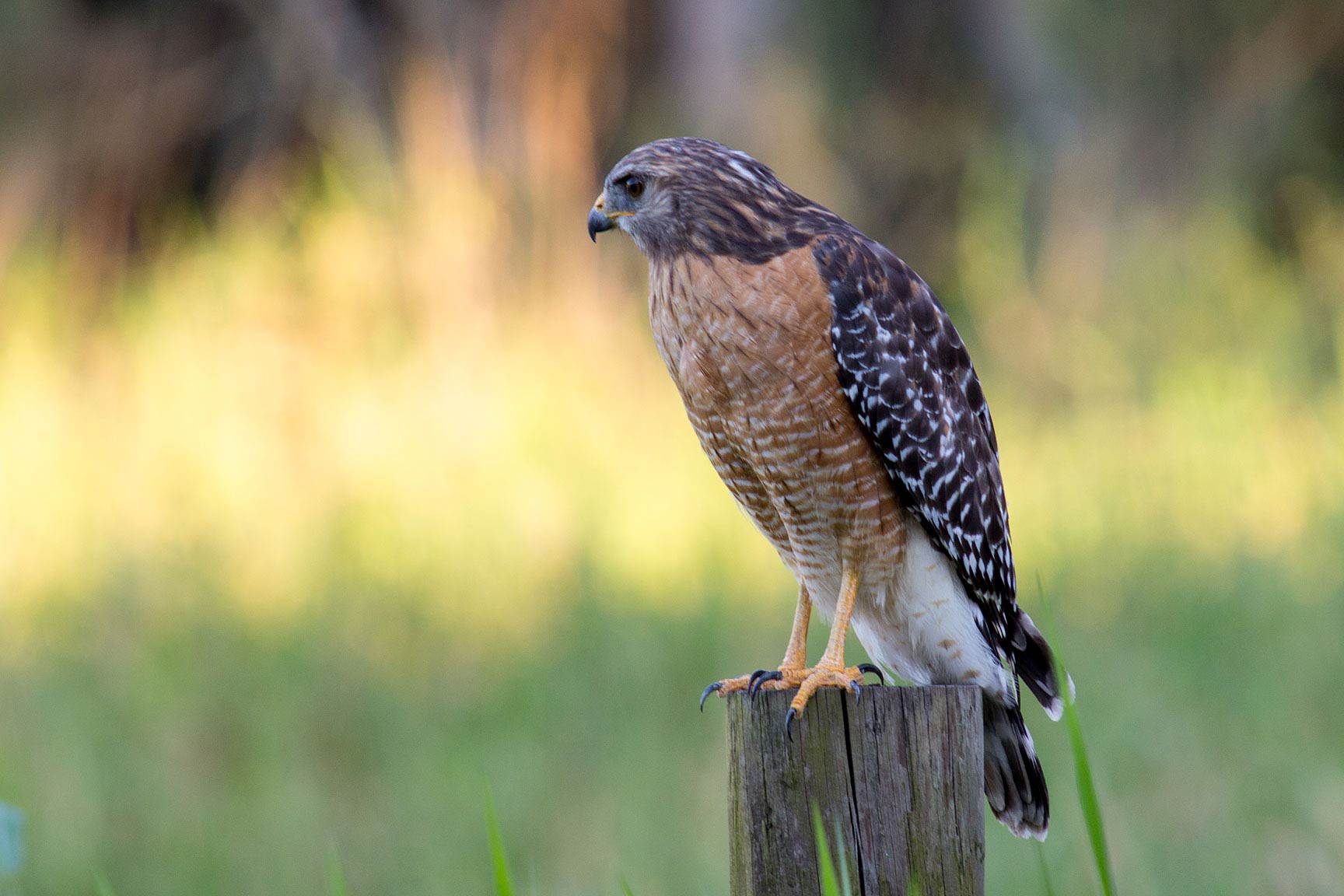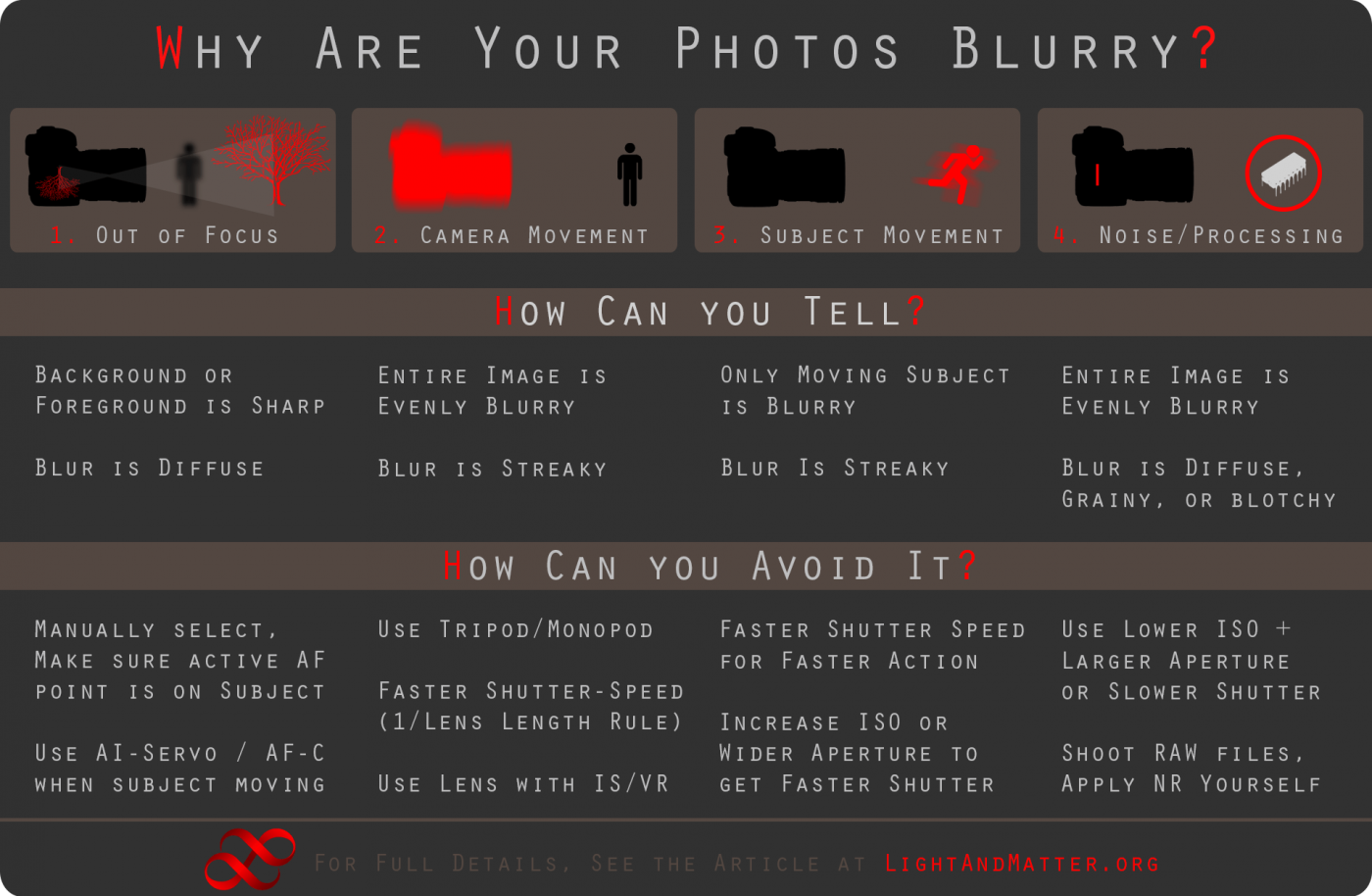2. Camera Shake / Movement
Camera movement is probably the most common cause of blurry pictures, since it is likely to occur any time that the light is dim and the camera is hand-held.
How Can You Tell?
If camera movement is the cause, you’ll find two things: first, everything in the image will be blurry (unlike an out of focus picture), and second, the blur will be directional and streaky rather than smoothly diffuse. If you look closely at a small detail, like a shiny reflection in a person’s eyes, you’ll see that the blur forms a path that traces the direction(s) of the camera movement.
Examples:




How Can You Avoid It?
The rule of thumb in photography is : Use a shutter speed faster than the focal length of your lens. This means that if you’re using a 50mm lens, you should shoot with a shutter speed faster than 1/50th sec, and if you’re using a 200mm lens, you should use a shutter speed faster than 1/200th sec, etc. Keep in mind, though, that if you’re using an SLR with a smaller sensor (most people are), you have to consider the crop-factor. On Canon, that’s 1.6x, and on Nikon, 1.5x. For Nikon users, for example, a 100mm lens becomes a 150mm equivalent, so you would need to use a shutter speed faster than 1/150th sec.
Using a lens with image-stabilization (IS for Canon, VR for Nikon) can help, too. If your lens claims to provide 3-stops worth of image stabilization, this means that you can take the shutter speed that you’d have used otherwise (say 1/160th for the 100mm lens above on a Canon) and cut that number in half 3 times. So, you’d get approximately 160 -> 80 -> 40 -> 20, so 1/20th sec. would be the slowest shutter speed you could use (under ideal conditions) and still not suffer from camera-shake. Using a monopod will give you 1 or 2 stops, usually, depending on the lens and your technique.
It is frequently helpful to shoot short bursts of photos (3-4 shots) when you’re pushing the lower limits of your shutter speed. Many people accidentally jerk their camera downwards when they press the shutter button, but when they hold it down, the second or third image is usually more stable.
So, how do you get a faster shutter speed? Start by using a larger aperture (smaller aperture number), if you can. Set your camera to Aperture Priority (Av on the Canon dial, A on the Nikon), and set the aperture to a lower number until your shutter speed (which will be automatically adjusted) is high enough. If it’s already as far as it will go, then adjust your ISO to a larger number until you’re in the safe shutter speed range. If you don’t have a firm understanding of how these changes affect your picture, I recommend watching my video (only 8 minutes long) about the Three Basics of Exposure.
Of course, you can always avoid camera shake by using a sturdy tripod and a remote release (cable release or wireless).
PREV. PAGE NEXT PAGE


